
The realm of graphics processing units (GPUs) unfolds as a captivating tapestry, woven with intricate elements harmonizing to unveil the enthralling visuals adorning our screens. At the core of this technological spectacle lies a pivotal facet — cooling. The GPU fans, orchestrators of temperature “GPU Fan Blades” equilibrium, assume a critical role. Yet, an intriguing question persists: Is it truly imperative for GPU fans to revolve ceaselessly?
Table of Contents of GPU Fan Blades
Deciphering GPU Cooling Mechanics
To fathom the indispensability of perpetual GPU fan motion, a foray into the convoluted labyrinth of GPU cooling mechanisms becomes essential. The components nestled within a GPU beget substantial heat during operation, making efficient cooling systems indispensable to avert overheating.
GPU cooling mechanics include the method involved with dispersing heat produced by the designs handling unit (GPU FAN) to forestall overheating and guarantee ideal execution. Here is a breakdown of the critical parts and ideas included:
Heat Sink:
The intensity sink is an uninvolved cooling part commonly made of metal (aluminum or copper) with blades or edges. It is intended to retain and “GPU Fan Blades” scatter heat away from the GPU.
Heat sinks work through conduction, moving intensity from the GPU to the metal, where it then, at that point, disseminates into the encompassing air.
Heat Lines:
- Heat pipes, which are sealed copper tubes containing a small amount of liquid and are used in some advanced cooling systems, are used.
- At the point when the GPU warms up, the fluid in the intensity pipes disintegrates, diverting intensity from the GPU. As it arrives at the cooler finish of the line, the fume consolidates once again into fluid, delivering the intensity.
Fans:
- Dynamic cooling depends on fans to upgrade heat dispersal. Fans are generally mounted on or close to the intensity sink to increment wind current.
- As the fans turn, they attract cooler air from the environmental factors and remove hot air away from the GPU. This cycle assists with keeping a lower temperature around the GPU.
Warm Glue/Cushions:
- Between the GPU and the heat sink, pads or thermal paste are applied. They guarantee proficient intensity movement by filling minute holes and anomalies in the surfaces.
- The cooling system’s overall thermal performance is influenced by the thermal interface material’s quality.
Cover and Lodging:
- The cover is a covering around the GPU and cooling parts, frequently made of plastic. It protects and directs the flow of air.
- Shrouds made specifically for some high-end GPUs are designed to maximize airflow and aesthetics.
VRM Cooling:
- On the GPU, power delivery is controlled by “GPU Fan Blades” by Voltage Regulator Modules (VRMs). For stable performance, VRM cooling must be effective.
- Some cooling arrangements consolidate extra heatsinks or cooling blades explicitly for VRMs.
Checking and Control:
- Current GPUs frequently accompany temperature sensors and control systems. These sensors screen the GPU temperature, and the GPU’s firmware changes fan speed in like manner.
- This powerful control assists in offset cooling execution with clamor levels, guaranteeing ideal temperatures under shifting responsibilities.
- Understanding these parts and their communications gives knowledge of the perplexing mechanics of GPU cooling. Producers frequently “GPU Fan Blades” utilize a blend of these components to make compelling cooling answers for GPUs.
Necessity of Continuous GPU Fan Operation
Whispers circulate regarding the necessity for continuous GPU fan rotation, with certain users subscribing to the belief in its indispensability. Let’s dispel this notion and navigate through the determinants steering GPU fan conduct, striking a nuanced equilibrium between cooling imperatives and energy thrift.
GPU cooling mechanics include the method involved with dispersing heat produced by the design handling unit (GPU) to forestall overheating and guarantee ideal execution. Here is a breakdown of the critical parts and ideas included:
Must GPU Fan Blades Whirl Unceasingly

Heat Sink:
- The intensity sink is an uninvolved cooling part commonly made of metal (aluminum or copper) with blades or edges. It is intended “GPU Fan Blades” to retain and scatter heat away from the GPU.
- Heat sinks work through conduction, moving intensity from the GPU to the metal, where it then, at that point, disseminates into the encompassing air.
Heat Lines:
- Heat pipes, which are sealed copper tubes containing a small amount of liquid and are used in some advanced cooling systems, are used.
- At the point when the GPU warms up, the fluid in the intensity pipes disintegrates, diverting intensity from the GPU. As it arrives at the cooler finish of the line, the fume consolidates once again into fluid, delivering the intensity.
Fans:
- Dynamic cooling depends on fans to upgrade heat dispersal. Fans are generally mounted on or close to the intensity sink to increment wind current.
- As the fans turn, they attract cooler air from the environmental factors and remove hot air away from the GPU. This cycle assists with keeping a lower temperature around the GPU.
Warm Glue/Cushions:
- Between the GPU and the heat sink, pads or thermal paste are applied. They guarantee proficient intensity move ment by filling minute holes and anomalies in the surfaces.
- The cooling system’s overall thermal performance is influenced by the thermal interface material’s quality.
Cover and Lodging:
- The cover is a covering around the GPU and cooling parts, frequently made of plastic. It protects and directs the flow of air.
- Shrouds made specifically for some high-end GPUs are designed to maximize airflow and aesthetics.
VRM Cooling:
- On the GPU, power delivery is controlled by Voltage Regulator Modules (VRMs). For stable performance, VRM cooling must be effective.
- Some cooling arrangements consolidate extra heatsinks or cooling blades explicitly for VRMs.
Checking and Control:
- Current GPUs frequently accompany temperature sensors and control systems. These sensors screen the GPU temperature, and the GPU’s firmware changes fan speed in like manner.
- This powerful control assists in offset cooling execution with clamor levels, guaranteeing ideal temperatures under shifting responsibilities.
Understanding these parts and their communications gives knowledge of the perplexing mechanics of GPU cooling. Producers “GPU Fan Blades” frequently utilize a blend of these components to make compelling cooling answers for GPUs.
Must GPU Fan Blades Whirl Unceasingly
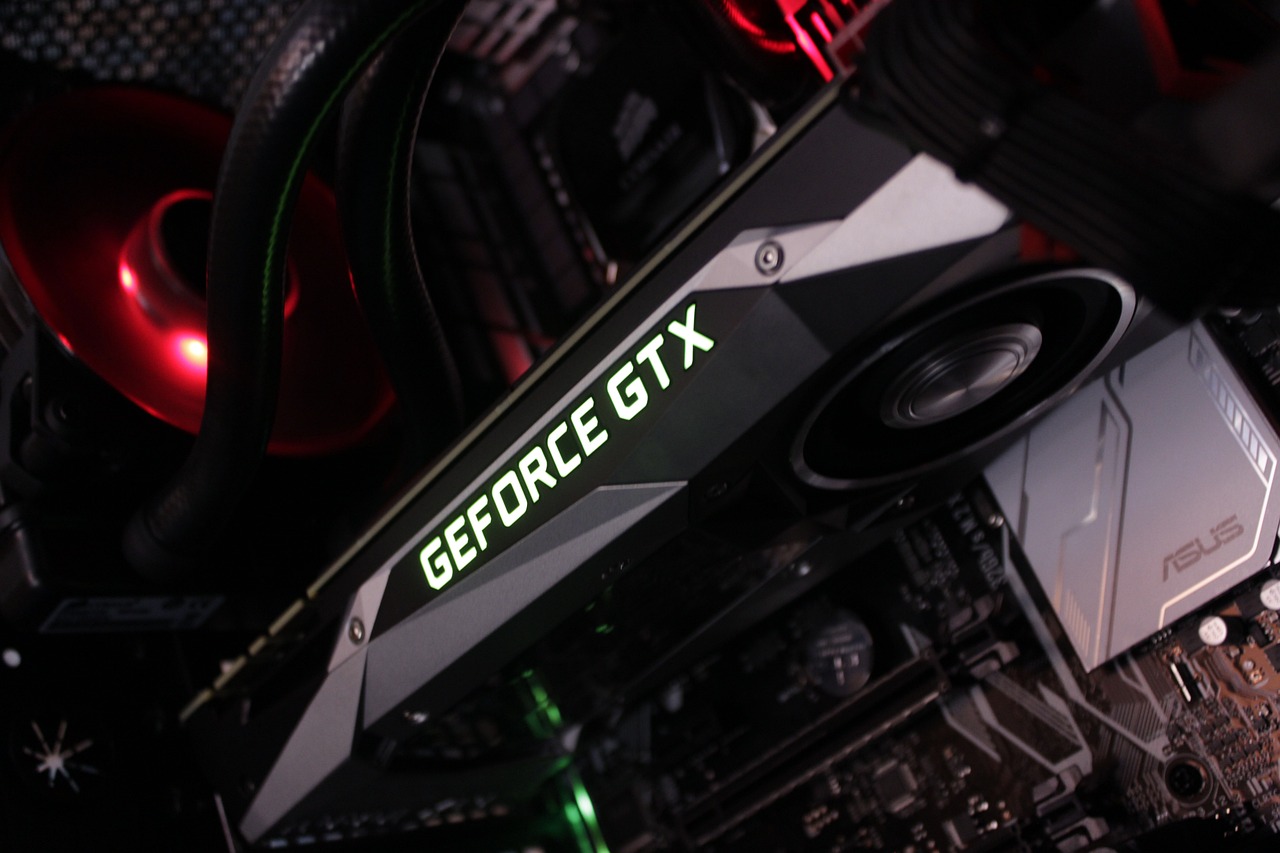
Perplexity in GPU Thermodynamics
Unraveling the enigma of determining the optimum temperature for your GPU can be a perplexing pursuit. We shall explore the spectrum “GPU Fan Blades” of ideal temperature ranges, dissect the ramifications of continuous fan engagement, and address apprehensions surrounding sporadic fan initiation.
Understanding GPU thermodynamics can without a doubt be puzzling, given the intricacy of the cycles in question. How about we separate a few critical viewpoints to give lucidity:
Heat Age:
- GPUs create heat during activity because of the electrical obstruction in their circuits. This is a characteristic side-effect of the energy expected for figuring errands.
- The more serious the errand (like gaming or delivering), the higher the intensity age.
Warm Dissemination:
- To forestall overheating, GPUs need successful warm dispersal systems. This includes moving intensity away from the GPU to keep a temperature “GPU Fan Blades” inside safe functional cutoff points.
- Heat scattering principally happens through the GPU’s cooling framework, which incorporates parts like intensity sinks, heat lines, fans, and warm connection points.
Heat Move Components:
- Heat sinks are made to take in the GPU’s heat. They function through conduction, in which the GPU transfers heat to the heat sink’s metal.
- Heat pipes, frequently loaded up with an unpredictable fluid, use stage change (vaporization and buildup) to ship heat away from the GPU effectively.
Windstream and Fans:
- By increasing airflow, fans play a crucial role in GPU thermodynamics. They attract cooler air from the environmental elements and oust hot air away from the GPU.
- The persistent activity of fans keeps a consistent “GPU Fan Blades” progression of air, forestalling the development of intensity around the GPU.
Control of the temperature:
- GPUs have temperature sensors that screen the temperature of the GPU. The temperature of the GPU is controlled by dynamically adjusting the fan speed in response to these temperature readings.
- To guarantee optimal performance and prevent thermal throttling, this adaptive control mechanism aims to maintain the GPU within a safe temperature range.
Proficiency and Materials:
- The effectiveness of GPU thermodynamics is impacted by the nature of the materials utilized in the cooling framework. Materials with high warm conductivity, similar to copper, are in many cases utilized in heat sinks and intensity lines to improve heat movement.
Outside Variables:
- The general viability of GPU thermodynamics can be affected by outside factors, like encompassing temperature and case wind current. Sufficient ventilation in the PC case is fundamental for permitting the GPU’s cooling framework to ideally work.
- Understanding GPU thermodynamics requires comprehending the interaction between temperature regulation, heat generation “GPU Fan Blades” mechanisms, and heat dissipation mechanisms.
Producers endeavor to configure cooling arrangements that balance execution, commotion levels, and dependability to furnish clients with a consistent and stable processing experience.
Burstiness in Fan Dynamics
- The burstiness inherent in fan dynamics emerges as a pivotal facet to scrutinize. We shall delineate the essence of burstiness, scrutinize its impact on system dynamics, and unravel strategies to fine-tune this behavior for optimal efficiency.
Attaining Equilibrium
Striking an equilibrium between GPU prowess and longevity entails a comprehension of how to refine fan configurations. We shall proffer “GPU Fan Blades” pragmatic counsel on adjusting fan parameters contingent on usage patterns and operational exigencies.
In the context of GPU thermodynamics, reaching equilibrium means achieving a balanced state in which the GPU’s heat is effectively dissipated and the temperature stays within a predetermined range. This balance is critical for keeping up with ideal execution, forestalling overheating, and guaranteeing the life span of the GPU. This is the way balance is accomplished and kept up with:
Must GPU Fan Blades Whirl Unceasingly
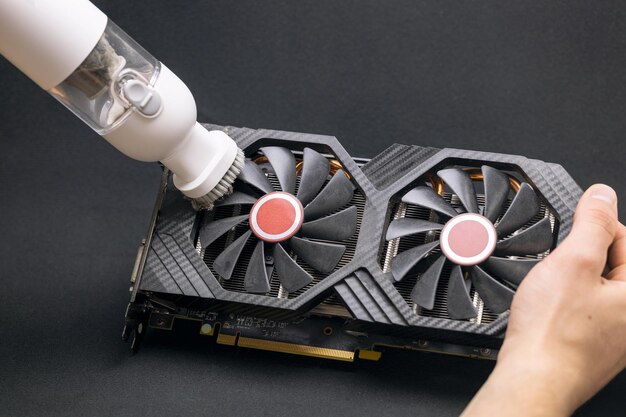
Heat Age:
When it is used for computationally intensive activities like gaming, rendering, or machine learning, the GPU produces heat.
Dissipation of Heat:
- When the rate of heat generation and dissipation coincide, equilibrium is reached. Compelling intensity dispersal includes the utilization of “GPU Fan Blades” cooling parts like intensity sinks, heat lines, fans, and warm connection points.
Cooling Parts:
- Heat sinks are intended to assimilate and spread heat away from the GPU. They frequently include blades or edges to build the surface region for better intensity dissemination.
- Heat pipes work with the productive vehicle of intensity away from the GPU through stage change processes (vaporization and buildup).
- To maintain a climate that is favorable to heat “GPU Fan Blades” dissipation, fans increase airflow by drawing in cool air and expelling hot air.
Warm Guideline:
- Temperature sensors on the GPU screen its temperature continuously. Based on these temperature readings, dynamic adjustments to the fan speed and other cooling parameters are made to achieve equilibrium.
- Versatile fan control guarantees that the GPU works inside a protected temperature range, forestalling both overheating and superfluous cooling.
Proficiency and Materials:
- Balance is impacted by the productivity of the cooling framework, which, thus, is impacted by the selection of materials. High-warm conductivity materials like copper are much of the time used to improve “GPU Fan Blades” heat movement.
Outside Variables:
- Accomplishing harmony is likewise dependent upon outside variables like encompassing temperature and case wind stream. Legitimate ventilation in the PC case upholds the cooling framework in keeping up with harmony by working with the trading of hot and cool air.
Strength and Execution:
- Balance guarantees steadiness in the GPU’s working temperature, forestalling temperature-related issues like warm choking. This, thus, adds to reliable and ideal GPU execution.
Finding some kind of harmony in GPU thermodynamics is a fragile cycle and producers configure cooling answers to accomplish “GPU Fan Blades” and keep up with balance under different use situations. Clients can likewise assume a part in keeping up with harmony by guaranteeing legitimate framework ventilation and keeping the GPU and its environmental factors liberated from residue and flotsam and jetsam.
Catering to Specific Scenarios

Must GPU Fan Blades Whirl Unceasingly
Distinctive activities demand diverse degrees of GPU efficacy. We shall traverse specific scenarios such as gaming and professional applications, delving into tailoring fan configurations to suit the exigencies of each.
Taking care of explicit situations about GPU thermodynamics includes fitting the cooling components and methodologies to address the one-of-a-kind necessities of “GPU Fan Blades” and difficulties presented by various use situations. This is the way cooling frameworks can be adjusted for explicit situations:
Gaming:
- Challenge: Gaming frequently includes supported times of high GPU usage, prompting expanded heat age.
- Solution: To withstand prolonged periods of intense graphics processing, gaming-oriented cooling systems may include robust heat sinks, high-performance fans, and effective heat dissipation.
Content Creation (Video Altering, Delivering):
- Challenge: Content creation assignments can be requested on GPU assets, producing significant intensity during delivery or video altering.
- Solution: Cooling frameworks for content creation “GPU Fan Blades” situations might focus on productive intensity lines and enormous surface region heat sinks to deal with irregular explosions of high GPU movement.
AI and machine learning:
- Challenge: AI responsibilities can differ, for certain errands being exceptionally GPU-concentrated and others less so.
- Solution: Versatile cooling frameworks with temperature “GPU Fan Blades” sensors and dynamic fan control are helpful for AI situations. The cooling framework can conform to the responsibility’s force, advancing execution without pointless clamor.
Low-Power or Silent Operation:
- Challenge: A few clients focus on quiet or energy-proficient activity during light undertakings or inactive periods.
- Solution: Features like fanless modes, in which the fan stops spinning when the GPU is not being used much, ensure a quiet operation, are common in cooling systems. Energy-effective plans assist with limiting power utilization.
Systems with a Small Form Factor (SFF):
- Challenge: Little structure factor frameworks have restricted space for cooling parts.
- Solution: Cooling answers for reduced frameworks center around proficient intensity dissemination inside bound spaces. This might include “GPU Fan Blades” imaginative intensity sink plans, fume chamber innovation, or custom cooling arrangements.
Fans of overclocking:
- Challenge: Overclocking expands the GPU’s clock speed, prompting higher intensity age.
- Solution: Cooling answers for overclocking fans might incorporate extra cooling parts, for example, committed GPU coolers or fluid cooling arrangements, to deal with the expanded warm burden.
VR (Augmented Reality) Gaming:
- Challenge: Due to the rendering of distinct views for each eye, virtual reality gaming can result in sustained GPU activity.
- Solution: Cooling frameworks intended for VR situations might focus on predictable and productive intensity dispersal to keep a stable VR experience without execution plunges.
Outrageous Conditions:
- Challenge: Working in outrageous conditions with high surrounding temperatures can challenge cooling proficiency.
- Solution: For extreme environments, robust cooling solutions with improved heat dissipation capabilities are required to keep the GPU operating within safe temperature limits.
Producers frequently plan GPUs with an equilibrium that takes special care of different situations. In any case, clients with explicit requirements might settle on custom cooling arrangements or pick GPUs custom-fitted for their planned use. Versatile and dynamic “GPU Fan Blades” cooling frameworks assume a critical part in enhancing execution and unwavering quality across different situations.
Must GPU Fan Blades Whirl Unceasingly

DIY GPU Fan Upkeep
Ensuring the optimal functioning of your GPU fans necessitates routine maintenance. We shall guide you through the process of cleansing and upkeeping GPU fans, recognizing indicators of potential malfunctions, and troubleshooting commonplace fan predicaments.
I can suggest some general companies known for producing cooling solutions for graphics cards. Please note that their product lines may include more than just fans. keeping up with your GPU’s fan through DIY (Do-It-Yourself) upkeep is fundamental for ideal execution and life span. This is an aide while heading to perform essential GPU fan upkeep:
Cleaning:
- Apparatuses Required: Compacted air, little brush, and build-up-free fabric.
Procedure:
- Your computer should be turned off and disconnected from the power supply.
- Open your PC case to get to the GPU.
- Utilize packed air to blow away residue from the fan edges, heatsink, and encompassing regions.
- Tenderly brush away any difficult residue or flotsam and jetsam.
- Using a lint-free cloth, clean the fan blades and other components in the area.
- Guarantee there’s no lingering dust, particularly on the heatsink balances.
Examining for Obstacles:
- Instruments Required: Spotlight, tweezers (if necessary).
Procedure:
- Investigate the fan’s sharp edges for any actual checks, for example, links, dust clusters, or unfamiliar articles.
- Utilize an electric lamp to get an unmistakable view.
- On the off chance that you spot any obstacles, cautiously eliminate them with tweezers or a little instrument.
Reapplying Warm Glue:
- Instruments Required: Isopropyl liquor, warm glue, build-up free material.
Procedure:
- Assuming you notice higher temperatures or conflicting cooling, you could have to reapply warm glue.
- Eliminate the GPU from the framework.
- Using isopropyl alcohol and a lint-free cloth, remove the old thermal paste from the GPU and heatsink.
- Apply a little, pea-sized measure of new warm glue to the GPU.
- Reattach the heatsink, guaranteeing appropriate contact with the GPU.
Verifying the Function of the Fan:
- Instruments Required: None.
Procedure:
- Power on your PC and screen the GPU fan.
- Check to see if the fan makes no unusual noises and spins smoothly.
- Use GPU observing programming to check assuming the fan answers fittingly to changes in GPU temperature.
- Any irregularities could be a sign of a problem with the fan or its control.
Keeping the Case Airflow Alive:
- Apparatuses Required: None.
Procedure:
- Guarantee your PC case has sufficient wind stream.
- Clean case admission and exhaust fans routinely.
- Orchestrate links to advance great wind stream, forestalling areas of interest around the GPU.
Regular examinations:
- Instruments Required: None.
Procedure:
- Include GPU fan maintenance in your routine computer checkups.
- Screen temperatures and fan speeds utilizing programming devices.
- Address any issues quickly to forestall long-haul harm.
Make sure to follow wellbeing precautionary measures, for example, disengaging power and establishing yourself to forestall static release, while working inside your PC. If you’re not comfortable doing maintenance on your own, or if your GPU is covered by a warranty, you might want to talk to the manufacturer or get professional help.
| Company Name | Website Address |
|---|---|
| Noctua | https://noctua.at/ |
| Arctic | https://www.arctic.ac/ |
| Corsair | https://www.corsair.com/ |
| NZXT | https://www.nzxt.com/ |
| Be Quiet! | https://www.bequiet.com/ |
| Cooler Master | https://www.coolermaster.com/ |
| Thermaltake | https://www.thermaltake.com/ |
| ASUS | https://www.asus.com/ |
| MSI | https://www.msi.com/ |
| EVGA | https://www.evga.com/ |
The Evolution of GPU Cooling Innovations
Embark on a nostalgic sojourn as we delve into the historical metamorphosis of GPU cooling. We shall spotlight revolutions in fan blueprint “GPU Fan Blades” and efficiency, furnishing insights into prospective trends.
The development of GPU cooling advancements has been set apart by ceaseless headways pointed toward tending to the rising interest for execution, effectiveness, and warm administration. Throughout the long term, different cooling arrangements have arisen to adapt to the rising intensity produced by strong design handling units (GPUs). Here is an outline of the critical stages in the development of GPU cooling:
Must GPU Fan Blades Whirl Unceasingly

Inactive Cooling:
- Early GPUs highlighted aloof cooling arrangements, where intensity sinks without fans were utilized to disseminate heat. This strategy depended on regular convection and conduction to move heat away from the GPU.
Presentation of Fans:
- The expansion of fans denoted a critical headway in GPU cooling. Dynamic cooling, with fans mounted on heat sinks, turned into a “GPU Fan Blades” typical methodology. Fans expanded the wind stream over the intensity sink, upgrading heat dispersal and taking into account all the more impressive GPUs.
Double Fan Arrangements:
- To additionally further develop cooling effectiveness, double fan arrangements became well known. These arrangements highlighted two fans working couple to expand the wind current and cover a bigger surface region of the intensity sink. This plan oversaw heat in additional requesting situations.
Fume Chamber Innovation:
- Fume chamber innovation was acquainted with supplanting or supplementing customary intensity pipes. Fume chambers are level, fixed units loaded up with a limited quantity of fluid. Heat is efficiently dissipated as the liquid vaporizes and moves to higher temperatures.
High-level Intensity Line Plans:
- Heat pipes developed with further developed plans, incorporating heat pipes with various circles and those formed to fit explicit GPU formats. These developments further developed heat movement and “GPU Fan Blades” dispersion inside the cooling framework.
Half and half Cooling Arrangements:
- Crossover cooling arrangements incorporated both air and fluid cooling. These arrangements ordinarily involved fluid cooling for the GPU center and air cooling for different parts. The goal of hybrid solutions was to improve thermal performance while maintaining air cooling simplicity.
Custom Cooling Arrangements:
- Makers began offering custom cooling arrangements customized to explicit GPUs. These arrangements frequently included bigger and more proficient intensity sinks, extra fans, and inventive plans to advance cooling for specific design cards.
Zero Fan or Fanless Modes:
- In low-demand scenarios, some GPUs introduced zero fan or fanless modes. The fan would quit turning when the GPU was not under the weighty burden, decreasing clamor levels and power utilization.
Brilliant Cooling and Programming Control:
- Present-day GPUs frequently include brilliant cooling frameworks with temperature sensors and modern control calculations. Programming “GPU Fan Blades” control permits dynamic changes by fan speed in light of ongoing temperature readings, advancing cooling execution.
High-level Materials:
- The utilization of cutting-edge materials, for example, graphene and other high warm conductivity substances, has turned into a concentration for further developing intensity move inside cooling frameworks.
Custom Covers and Style:
- GPU producers progressively plan custom covers for cooling arrangements, for usefulness as well as for style. Handcrafts can improve brand personality and client experience.
The need to balance the increasing power and heat dissipation requirements of GPUs with considerations for noise levels, aesthetics, and “GPU Fan Blades” user experience has driven the development of GPU cooling. As innovation keeps on propelling, we can expect further advancements in GPU cooling to fulfill the needs of progressively strong illustration cards.
Navigating GPU Fan Software
GPU manipulation software endows users with the authority to tailor fan configurations. We shall present an overview of how software shapes fan comportment and introduce popular utilities for finetuning fan parameters.

Must GPU Fan Blades Whirl Unceasingly
0Exploring GPU fan programming includes utilizing applications and instruments given by GPU producers or outsiders to control and screen “GPU Fan Blades” the fan speed, temperature, and by and large cooling execution of your design handling unit (GPU). Here is a general aid on the best way to explore GPU fan programming:
Maker Programming:
The majority of GPU manufacturers offer their own software for controlling fan settings and managing graphics card settings. Models include:
- NVIDIA Control Board (for NVIDIA GPUs):
- Explore to the NVIDIA Control Board.
- Under the “Oversee 3D settings” area, you might track down choices for changing the fan speed and temperature targets.
- AMD Radeon Programming (for AMD GPUs):
- Open the AMD Radeon Programming.
- Explore to the “Execution” tab to get to fan control settings.
Outsider Programming:
There are likewise outsider applications that “GPU Fan Blades” offer further developed elements and similarity with GPUs from different makers. Famous decisions include:
- MSI Max engine propulsion:
- MSI Afterburner is a popular program that works with both AMD and NVIDIA GPUs.
- It gives an easy-to-understand connection point to changing fan speed, observing temperature, and overclocking.
- EVGA Performance X1:
- Explicitly intended for EVGA illustration cards, Accuracy X1 offers exact command over fan speed, RGB lighting, and overclocking.
- GPU Change II (for ASUS GPUs):
- ASUS gives GPU Change II to its illustration cards, permitting clients to redo fan profiles and screen GPU boundaries.
- Changing Fan Settings:
- When you have the product open, search for segments or tabs connected with fan control or cooling.
- Normal settings include:
- Fan Speed: Change the speed of the GPU fan. Higher speeds may cause more noise, but they also increase cooling.
- Temperature Targets: Set temperature “GPU Fan Blades” focuses for the GPU. The fan speed acclimates to keep up with temperatures underneath these objectives.
- Custom Fan Profiles: Make custom fan bends given temperature, considering more granular control.
Observing GPU Boundaries:

Must GPU Fan Blades Whirl Unceasingly
GPU fan programming likewise gives constant checking of different boundaries:
- Temperature: Watch out for the GPU temperature to guarantee it stays inside safe cutoff points.
- Flow Rate: Screen the fan speed to evaluate the cooling execution.
- Burden and Use: Check GPU burden and utilization to comprehend the interest on the designs card.
Applying Changes:
- In the wake of changing fan settings, there is commonly a button or choice to apply the changes.
- Some product permits you to save custom profiles for various situations (e.g., gaming, video altering, or inactive).
Testing and Strength:
- In the wake of making changes, test your GPU under different situations to guarantee steadiness and ideal cooling.
- Screen the GPU boundaries to perceive how the fan answers various jobs.
Refreshing Programming:
- Intermittently check for updates to your GPU fan programming. Producers frequently discharge updates to further develop similarity, add highlights, and address issues.
Keep in mind that improper fan settings can have an impact on the longevity and stability of the GPU. Continuously guarantee that your “GPU Fan Blades” progressions are inside safe working cutoff points and counsel your GPU’s documentation for explicit direction.
GPU Fan Blades
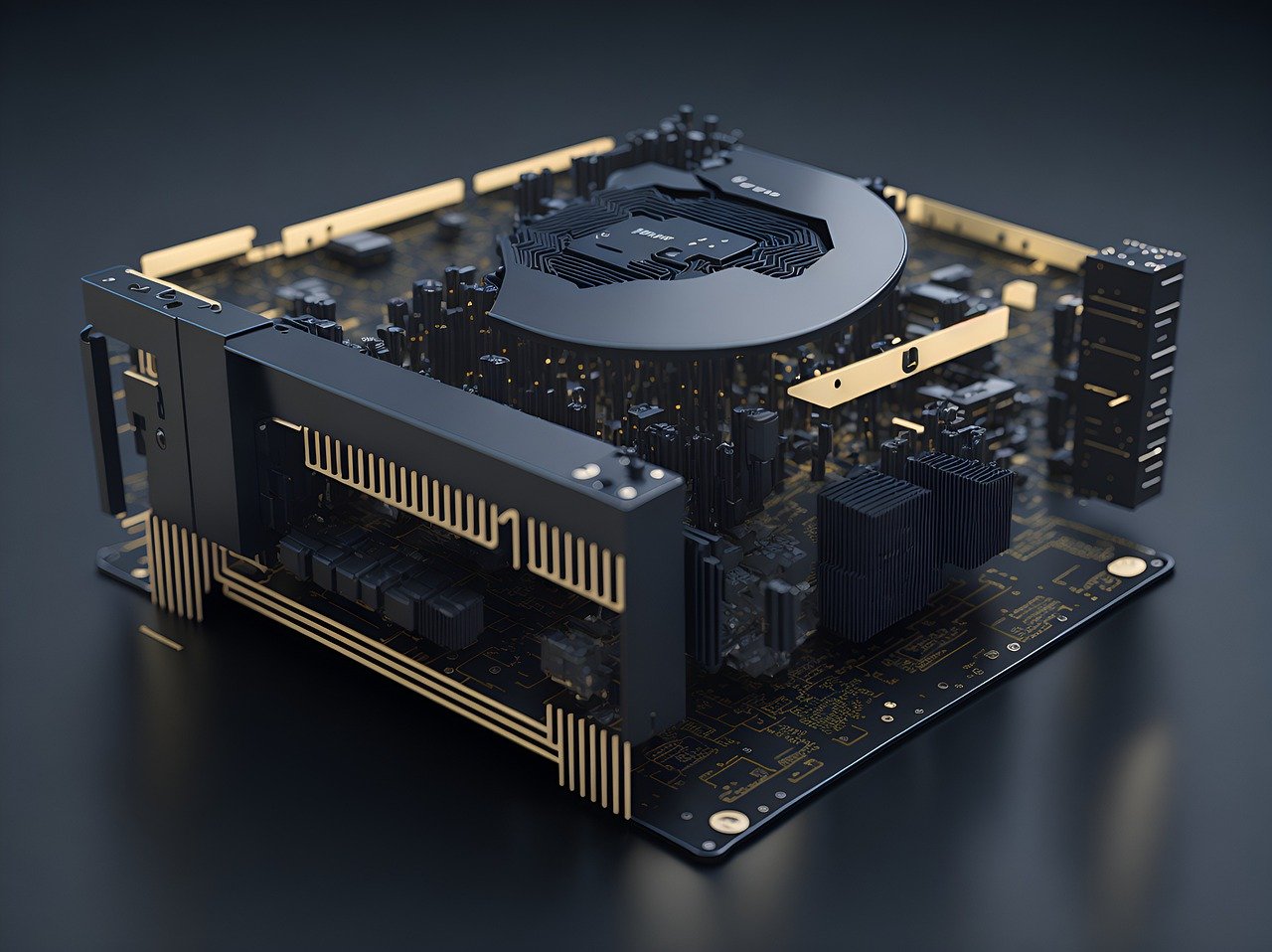
Fallacies and Verities
Let’s debunk prevalent fallacies encircling GPU fans. We shall address misgivings concerning wear and tear, dismantle the dogma of perpetual operation, and elucidate the actualities of GPU fan governance.
Ecological Ramifications of Uninterrupted Fan Operation
The ceaseless operation of fans imparts “GPU Fan Blades” ecological ramifications. We shall delve into the facet of energy consumption and advocate eco-conscious practices whilst balancing the imperatives of performance.
The continuous activity of fans, for example, those found in PC parts like GPUs (Designs Handling Units), can have environmental “GPU Fan Blades” implications, especially regarding energy utilization and electronic waste. Here are a few contemplations:
Energy Utilization:
- Increased Use of Power: Higher energy consumption is caused by the continuous operation of the fan. Fans expect power to run, and while left running without interference, they add to the general power utilization of the gadget.
- Carbon Impression: Higher energy utilization means an expanded carbon impression, particularly in districts where power is principally created from non-sustainable sources.
Asset Exhaustion:
- Fabricating Effect: Delivering fans and related electronic parts includes the extraction of unrefined components, which can add to asset exhaustion and ecological debasement.
- Abbreviated Life expectancy: Due to wear and tear, continuous “GPU Fan Blades” fan operation may shorten the lifespan of electronic components, leading to an increased demand for new products and more frequent replacements.
Electronic Waste (E-Squander):
- Restricted Life expectancy: Fans, like other electronic parts, have a restricted functional life expectancy. Continuous fan activity might add to untimely disappointment and a previous removal of electronic gadgets.
- Removal Difficulties: Inappropriate removal of electronic gadgets can prompt ecological contamination and well-being dangers. E-squander frequently contains dangerous materials that can drain into the dirt and water “GPU Fan Blades” on the off chance that not dealt with as expected.
Productivity Contemplations:
- Streamlining Open doors: Inefficient cooling mechanisms may be the cause of uninterrupted fan operation. Present-day hardware frequently includes versatile fan control frameworks that enhance fan speed in light of temperature, diminishing superfluous power utilization.
- Heat Dispersal Techniques: Investigating options or more productive intensity dispersal techniques, for example, further developed “GPU Fan Blades” heat sinks, heat lines, or fluid cooling, can add to more eco-accommodating gadget plans.
Energy-Productive Practices:
- Power The executives Highlights: Power “GPU Fan Blades” management functions are included in a lot of modern electronic devices, including GPUs. Sleep modes, idle states, and dynamic fan control are examples of these features that aim to reduce energy use when there is little activity.
- Awareness of Users: Users may become more responsible users if they are made aware of the negative effects that continuous fan operation has on the environment and encouraged to use energy-efficient methods.
While the natural consequences of continuous fan activity are not quite as immediate or serious as a few other ecological issues, they add to the more extensive difficulties related with energy utilization, asset consumption, and electronic “GPU Fan Blades” waste. Advancing energy-effective plans, mindful client rehearses, and appropriate removal of electronic gadgets are fundamental stages toward moderating these natural worries.
Community Testimonies and Experiences

Must GPU Fan Blades Whirl Unceasingly
What narratives do users weave regarding GPU fan configurations? We shall aggregate perspectives and real-world experiences from the community, presenting a collective outlook on steering GPU fans with efficacy.
Local area declarations and encounters give important experiences into a great many subjects, mirroring the different points of view and certifiable experiences of people inside a local area. Whether examining items, administrations, occasions, or cultural issues, local area tributes add to an aggregate comprehension. Here are a few normal settings where local area declarations and encounters are shared:
Reviews of items:
- Clients frequently share their encounters with different items, going from hardware and apparatuses to books and magnificence items.
- Declarations feature item includes, execution, strength, and generally speaking fulfillment.
- Online stages, for example, internet business sites and gatherings, act as normal spaces for clients to post surveys.
Review of the service:
- Clients give criticism on administrations they’ve encountered, like eateries, lodgings, or online stages.
- Audits might cover perspectives like client care, dependability, and the general nature of the assistance.
Experiential Events:
- Participants share their contemplations on occasions, celebrations, shows, and gatherings.
- Testimonials can include things like venue quality, entertainment value, overall enjoyment, and organization.
Instructive Encounters:
- Understudies and students share their encounters with instructive establishments, courses, or web-based learning stages.
- Testimonials may concentrate on the content of the course, the quality of the instruction, or the efficiency of the teaching methods.
Wellbeing and Health:
- People talk about their encounters with well-being and health works on, including workout schedules, diets, and elective treatments.
- Declarations frequently address individual changes, challenges confronted, and generally speaking prosperity.
Travel Encounters:
- Explorers share their undertakings, giving bits of knowledge into objections, facilities, transportation, and social encounters.
- Reviews assist others in making informed decisions and planning their trips.
Local area Backing:
- People offer thanks or concerns concerning local area support drives, neighborhood associations, or altruistic endeavors.
- People’s lives are shown to be impacted by community-driven initiatives through testimonials.
Tools and Technology:
- Users discuss their experiences with the most recent technological advancements, software, and gadgets.
- Declarations cover ease of use, execution, and how these advancements incorporate into day-to-day existence.
Profession and Business:
- Experts talk about their encounters with various organizations, workplaces, and profession ways.
- Declarations give experiences into working environment culture, profession amazing learning experiences, and occupation fulfillment.
Social and Social Issues:
- Social and cultural issues are discussed, personal experiences are shared, and community members advocate for change.
- Declarations add to public talk on subjects like variety, consideration, and civil rights.
Local area declarations and encounters assume a crucial part in forming feelings, impacting choices, and cultivating a feeling of shared “GPU Fan Blades” information. They give a dynamic and valid story that goes past conventional assessments, offering a rich embroidery of points of view that add to a more exhaustive comprehension of different parts of life.
| Graphics Card Model | Website Address |
|---|---|
| NVIDIA GeForce RTX 3080 | https://www.nvidia.com/en-gb/ |
| AMD Radeon RX 6800 XT | https://www.amd.com/en |
| ASUS ROG Strix RTX 3070 | https://www.asus.com/ |
| MSI Gaming X Trio RTX 3090 | https://www.msi.com/ |
| Gigabyte AORUS RX 5700 XT | https://www.gigabyte.com/ |
| EVGA GeForce GTX 1660 Ti | https://www.evga.com/ |
| Zotac Gaming GeForce RTX 3060 | https://www.zotac.com/ |
| XFX Radeon RX 580 | https://www.xfxforce.com/ |
| Palit GeForce GTX 1050 Ti | https://www.palit.com/ |
| Sapphire Pulse Radeon RX 5600 XT | https://www.sapphiretech.com/ |
In summation, the management of GPU fans entails a delicate equilibrium encompassing performance, temperature regulation, and lifespan. Armed with a comprehension of the intricacies embedded in GPU cooling, users can make judicious decisions to refine fan configurations tailored to their specific requisites.
- Monitor Stand for Sim Racing 2023
- Input Signal Not Found HP Monitor | BestTroubleshooting your Monitor
- Best Buy Black Friday Ads 2023
- IPS vs LED Monitor for Gaming: Best for You
- Motorola Baby Monitor 2023 : Ensuring Safety and Peace of Mind
FAQs for GPU Fans Blades
Why do GPU fans intermittently surge in velocity sans augmented workload?
Exploring the determinants instigating fluctuations in fan speed.
Can sustained GPU fan operation precipitate hardware degradation over time?
Addressing apprehensions concerning the enduring impact of continual fan engagement.
Are post-purchase GPU cooling enhancements worth considering for augmented efficacy?
Weighing the merits and demerits of supplementary cooling solutions.
How frequently should I cleanse my GPU fans for sustained optimal performance?
Furnishing guidance on sustaining peak fan performance through regular cleansing.
What role do drivers play in dictating GPU fan comportment?
Understanding the sway of GPU drivers on fan operation.
- Does gpu fan always spin? | 2024 - December 27, 2023
- GPU Fan Rotation, Save Energy | The Truth About 2024 - December 25, 2023
- How to Increase GPU Fan Speed | Ultimate Guide! 2024 - December 19, 2023



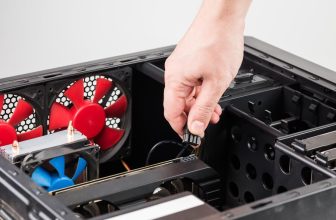
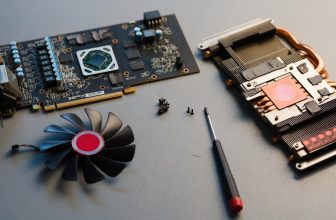
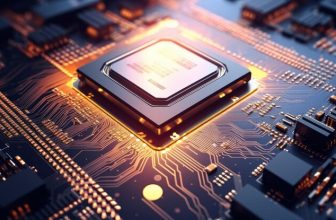
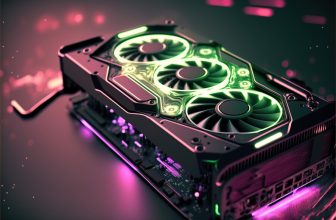

[…] hardware, comprehending the intricacies of GPU fan dynamics stands as a paramount endeavor. The GPU, or Graphics Processing Unit, employs fans as instrumental actors in upholding optimal […]
[…] Must GPU Fan Blades Whirl Unceasingly? […]
[…] GPU fans can be influenced by various factors. These may include ambient temperature room, design GPU cooler, level GPU overclocking (if any), and workload applied GPU. Manufacturers often program fan curves […]
[…] full potential of your GPU. This segment explores diverse methodologies and tactics to fine-tune GPU cooling, ensuring that your gaming workstation operates seamlessly without compromising on velocity and […]
[…] Astoundingly, the synergy between GPU fan rotation and performance becomes apparent. When fans operate optimally, the GPU achieves temperature constancy, culminating in augmented performance. Instances from the tangible realm underscore tangible performance enhancements derived from meticulous adjustment of fan parameters. […]
[…] Complexity in Cooling Strategies: A hurdle in GPU cooling lies in the diversity of workloads, ranging from casual browsing to (GPUs Smart Cooling Strategies) […]
[…] of do-it-yourself initiatives, we shall scrutinize uncomplicated methodologies to elevate GPU cooling efficacy sans compromise on […]
[…] interactive and gamified fan experiences. In this piece, we explore the ever-evolving domain of GPU fan engagement, with a focus on the atypical notion of serene fan […]
[…] in technology, and changes in the industry, speculating is necessary to make predictions about GPU cooling patterns in the future. Starting around my last information update in January 2022, here are a few likely […]